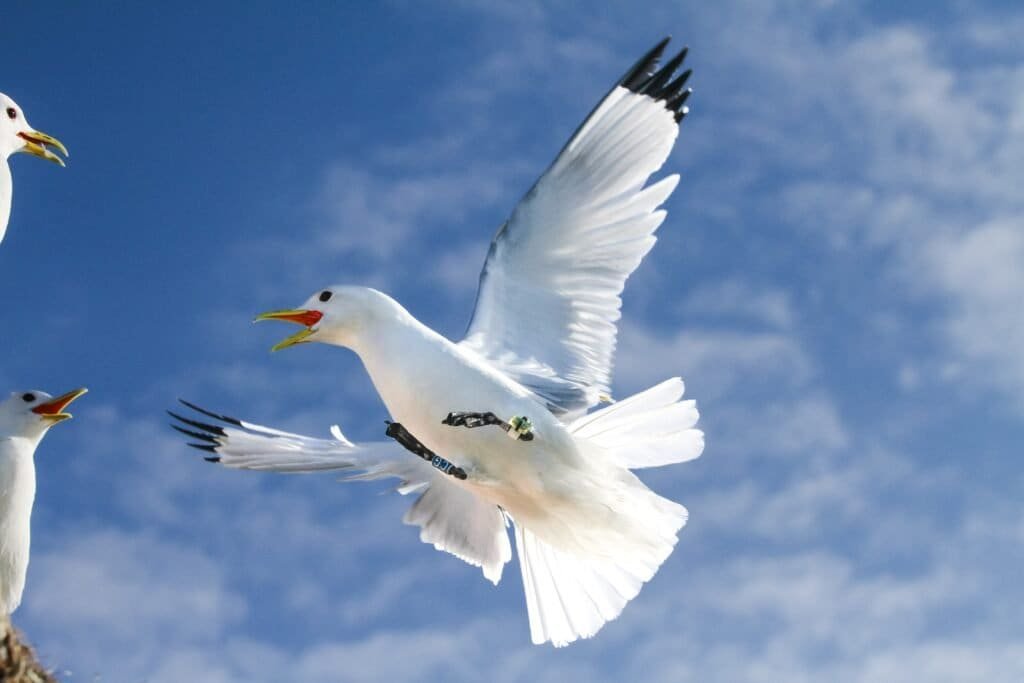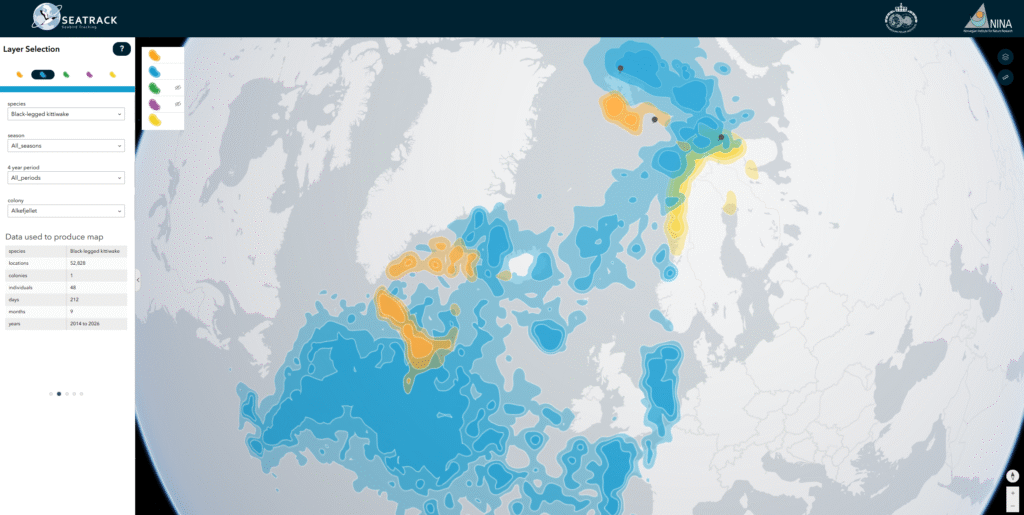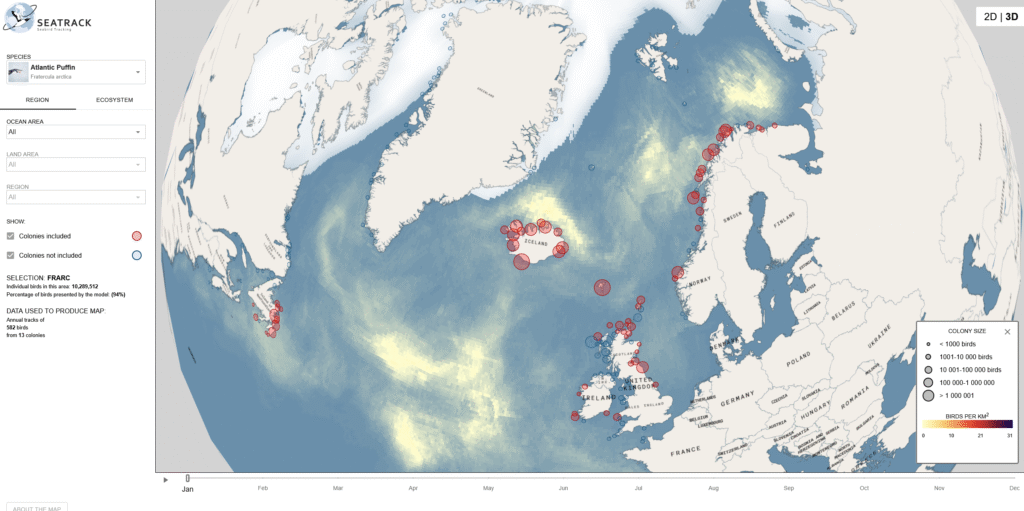Black-legged kittiwakes (Rissa tridactyla), representing one of six pelagic surface feeding species within the scope of the project, are being instrumented with GLS loggers at 33 SEATRACK localities.
The Black-legged kittiwake has been a SEATRACK species since the start of the programme in 2014. Since 2019 SEATRACK is also deploying GLS loggers on black-legged kittiwake chicks, which currently include three sites: Anda, Kongsfjorden and Røst.

Although having decreasing population trends over much of its range, the Black-legged kittiwakes are widespread and abundant in the North Atlantic and considered “least concern” by the IUCN.
The black-legged kittiwake can be found breeding along coastlines of the north Pacific and Atlantic oceans. It has a white head and body, grey back with black wing tips, the legs are black and the bill yellow.
Black-legged kittiwakes feed predominantly on marine invertebrates and fish. At sea during the winter they have also been known to feed on planktonic invertebrates and exploit sewage outfalls and fishing vessels.
Featured image: Sébastien Descamps.

View data




